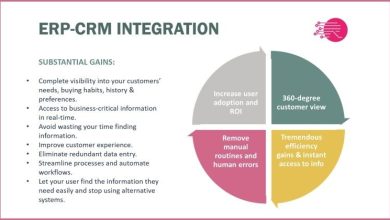6 Things You Need To Know About Progressive Web Apps

Progressive web apps are the next big thing in mobile development. If you’re not familiar with them, don’t worry! In this blog post, we will discuss what progressive web apps are and some of the benefits they offer. We will also cover some of the things you need to know before creating a progressive web app. So, if you’re interested in learning more about this exciting new technology, keep reading!
What Are Progressive Web Apps?
Progressive web apps are a type of app that combines the best of both worlds – the web and the native app experience. They’re designed to be fast, reliable, and engaging. Progressive web apps are built using standard web technologies (HTML, CSS, and JavaScript) but they offer an app-like experience to users. Some PWA examples are Twitter, Alibaba, Uber. Also, there are popular frameworks for creating PWAs such as React Native, Ionic, and Angular.
What Are The Benefits of Progressive Web Apps?
There are many benefits that come with using progressive web apps. For one, they’re much easier and cheaper to develop than native apps. Additionally, they can be used on any type of device – whether it’s a smartphone, tablet, or desktop. And because they’re built using web technologies, they can be updated without having to go through the app store. This means that you can quickly and easily add new features or fix bugs without waiting for approval from Apple or Google.
What Do You Need To Know Before Creating A Progressive Web App?
1) Offline Usability
One of the key features of progressive web apps is that they’re designed to work offline. This means that users will still be able to access your app, even if they don’t have an internet connection. In order to achieve this, you’ll need to use service workers. Service workers are a type of script that runs in the background and handles caching. Caching is a way of storing data so that it can be accessed offline. When you create a progressive web app, you’ll need to specify what files should be cached and how long they should be cached for. Service workers will then handle the caching for you. One thing to keep in mind is that service workers can only cache static files. This means that if your app needs to access a database, it will need to be online in order to do so.
2) Page Loading Speed
Another important aspect of progressive web apps is speed. Because they’re designed to work offline, they need to be able to load quickly, even on slow internet connections. One way to improve the loading speed of your progressive web app is to use a technique called “lazy loading.” Lazy loading is a way of loading resources only when they’re needed. For example, if your app has a lot of images, you might want to consider lazy loading them. That way, they won’t all be loaded at once, which can slow down the app. To lazy load images in your progressive web app, you can use the “lazySizes” library. LazySizes is a free and open source library that makes lazy loading easy to implement.
3) Platform Independence
Another great thing about progressive web apps is that they’re platform independent. This means that they can be used on any type of device – whether it’s a smartphone, tablet, or desktop. Additionally, they can be used on any operating system – whether it’s iOS, Android, or Windows. This makes progressive web apps a great choice for businesses that want to reach a wide range of users. For instance, if you have a website that’s only available on desktop, you could create a progressive web app version of it that can be used on mobile devices.
4) Background Synchronization
One of the most useful features of progressive web apps is background synchronization. This allows your app to sync data with a server, even if the device is offline. For example, if you’re creating a task manager app, you might want to use background synchronization so that tasks can be synced between devices. To use background synchronization in your progressive web app, you’ll need to use a library called “PWA-Sync.” PWA-Sync is a free and open source library that makes it easy to implement background synchronization. This means that you can quickly and easily add new features or fix bugs without waiting for approval from Apple or Google.
5) Indexability for SEO
Another important aspect of progressive web apps is indexability for SEO. This means that your app will be able to show up in search results, just like a website. In order to achieve this, you’ll need to make sure that your app is well-optimized for search engines. One way to do this is to use the “Google Webmaster Tools.” Google Webmaster Tools is a free service from Google that allows you to submit your app to their search engine.
6) Push Notifications
One of the most popular features of progressive web apps is push notifications. Push notifications allow you to send messages to your users, even when they’re not using your app. For example, you could use push notifications to let your users know about new features or updates. To use push notifications in your progressive web app, you’ll need to use a library called “Push.js.” Push.js is a free and open source library that makes it easy to implement push notifications.
Are There Any Disadvantages?
While progressive web apps have a lot of advantages, there are also some disadvantages. One of the biggest disadvantages is that they’re not yet supported by all browsers. For example, Safari does not yet support service workers, which means that progressive web apps will not work offline on Safari. Additionally, Microsoft Edge does not yet support background synchronization. However, support for progressive web apps is rapidly increasing, and it’s only a matter of time before all browsers support them.
Progressive web apps are a great way to improve the user experience of your app. They’re fast, they’re platform independent, and they can be used offline. If you’re looking for a way to improve your app, then consider making it a progressive web app. We hope this article was helpful.










